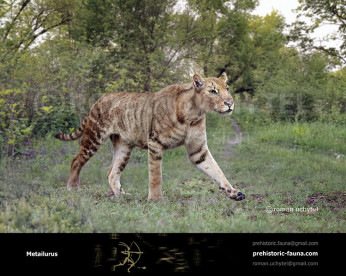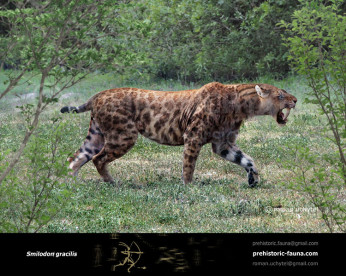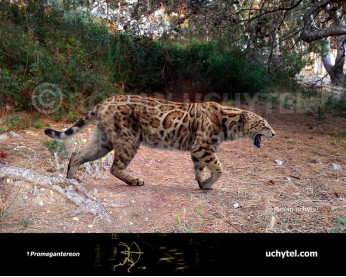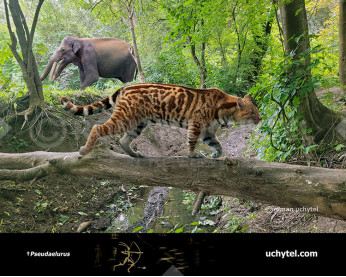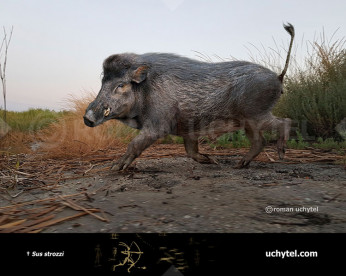Megantereon
3030Megantereon (Megantereon Croizet et Jobert, 1828)
Order: Carnivora
Family: Felidae
Size: was around 1.4 meters long, 70-75 cm tall at the shoulder. Weight estimated about 60-170 kg.
Time period: Throughout the late Pliocene, till the middle Pleistocene (Africa, Eurasia and North America, 3.6–0.40 Ma ).
A typical representative: Megantereon cultridens Cuvier, 1824
Megantereon was an ancient machairodontine saber-toothed cat that lived in Africa and Eurasia (North America?). The origin of Megantereon is uncertain. Some authors have hypothesised that an early lineage of Megantereon was ancestral to Smilodon, though this has been disputed by others, who considered Smilodon and Megantereon to be sister groups.. Megantereon was built like a large modern jaguar but somewhat heavier. It had stocky forelimbs with the lower half of these forelimbs lion-sized. It had large neck muscles designed to deliver a powerful shearing bite. he smallest species from Africa and the lower Pleistocene of Europe have been estimated to only 60–70 kilograms. However, these estimations were obtained from comparisons of the carnassial teeth. Younger estimations, which are based on the postcranial skeleton, lead to body weights of about 100 kilograms for the smaller specimens. In agreement with that, more recent sources estimated Megantereon from the European lower Pleistocene at 100–120 kilograms. Remains from the Siwalik Hills in the northern Indian subcontinent dating to the Early Pleistocene, which are among the largest in the genus ( about 200 kilograms), have been attributed to the species M. falconeri.
Megantereon (Megantereon Croizet et Jobert, 1828)
Order: Carnivora
Family: Felidae
Size: was around 1.4 meters long, 70-75 cm tall at the shoulder. Weight estimated about 60-170 kg.
Time period: Throughout the late Pliocene, till the middle Pleistocene (Africa, Eurasia and North America, 3.6–0.40 Ma ).
A typical representative: Megantereon cultridens Cuvier, 1824
Megantereon was an ancient machairodontine saber-toothed cat that lived in Africa and Eurasia (North America?). The origin of Megantereon is uncertain. Some authors have hypothesised that an early lineage of Megantereon was ancestral to Smilodon, though this has been disputed by others, who considered Smilodon and Megantereon to be sister groups.. Megantereon was built like a large modern jaguar but somewhat heavier. It had stocky forelimbs with the lower half of these forelimbs lion-sized. It had large neck muscles designed to deliver a powerful shearing bite. he smallest species from Africa and the lower Pleistocene of Europe have been estimated to only 60–70 kilograms. However, these estimations were obtained from comparisons of the carnassial teeth. Younger estimations, which are based on the postcranial skeleton, lead to body weights of about 100 kilograms for the smaller specimens. In agreement with that, more recent sources estimated Megantereon from the European lower Pleistocene at 100–120 kilograms. Remains from the Siwalik Hills in the northern Indian subcontinent dating to the Early Pleistocene, which are among the largest in the genus ( about 200 kilograms), have been attributed to the species M. falconeri.

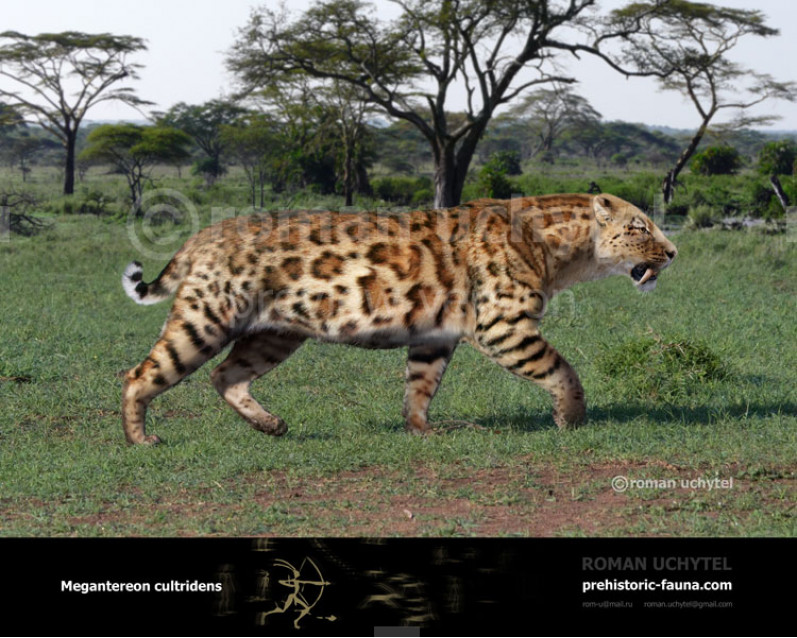
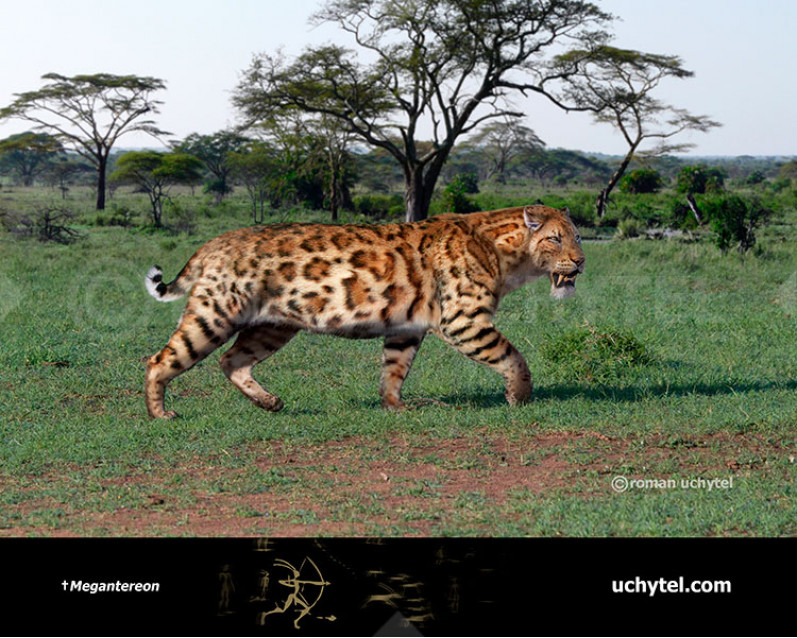
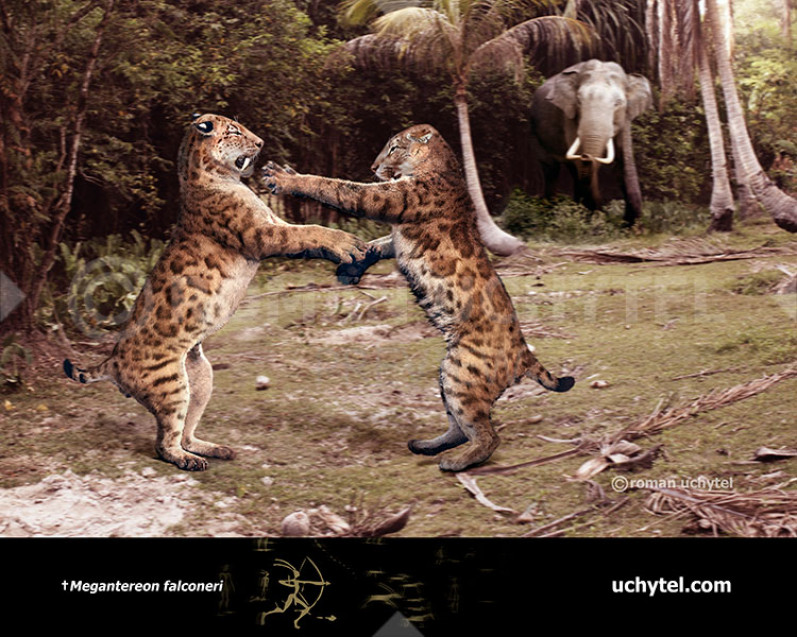

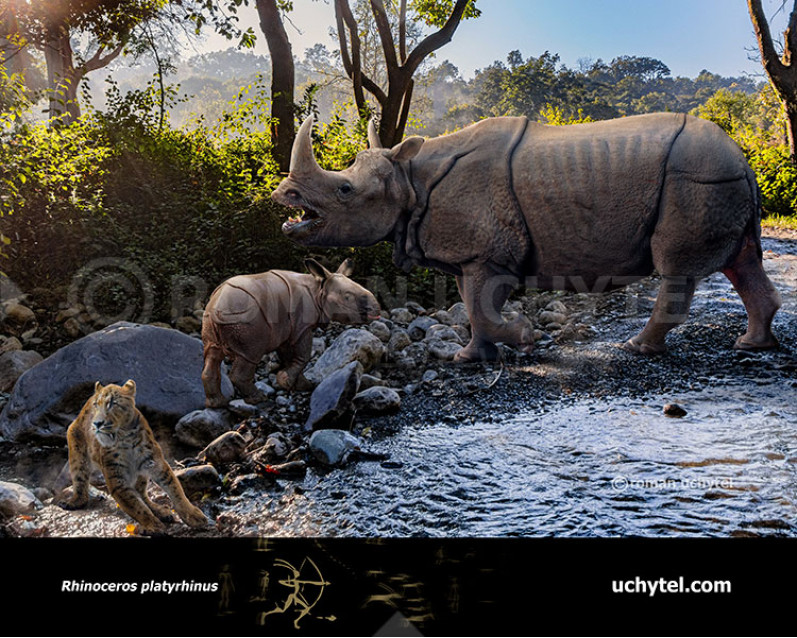
-797x638.jpg)

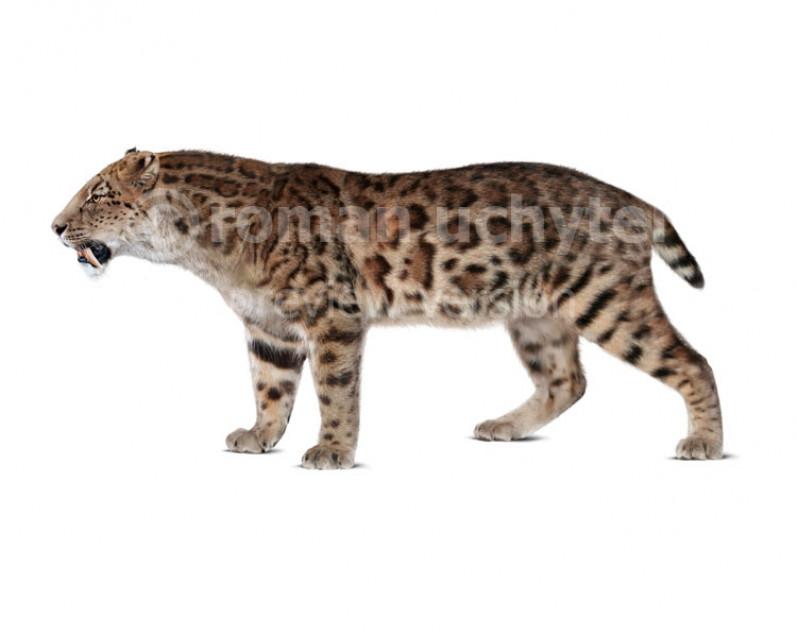
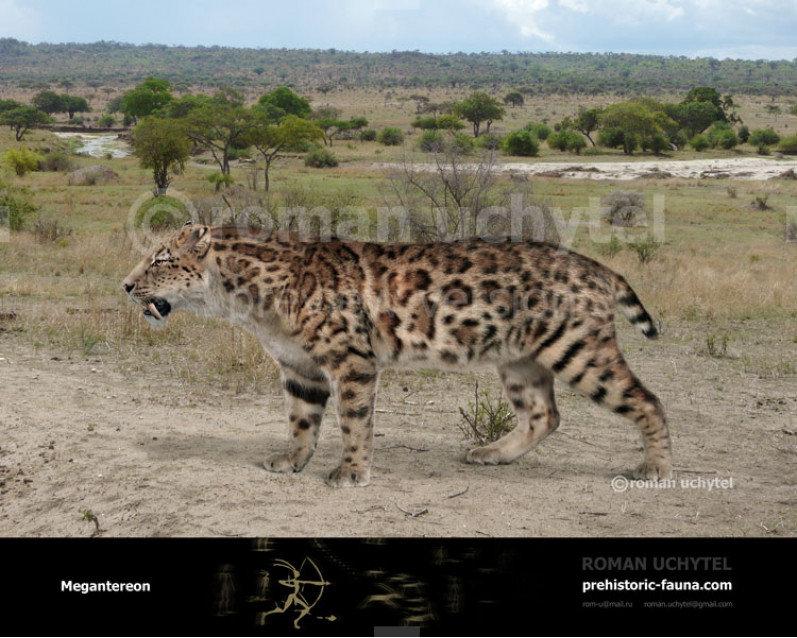
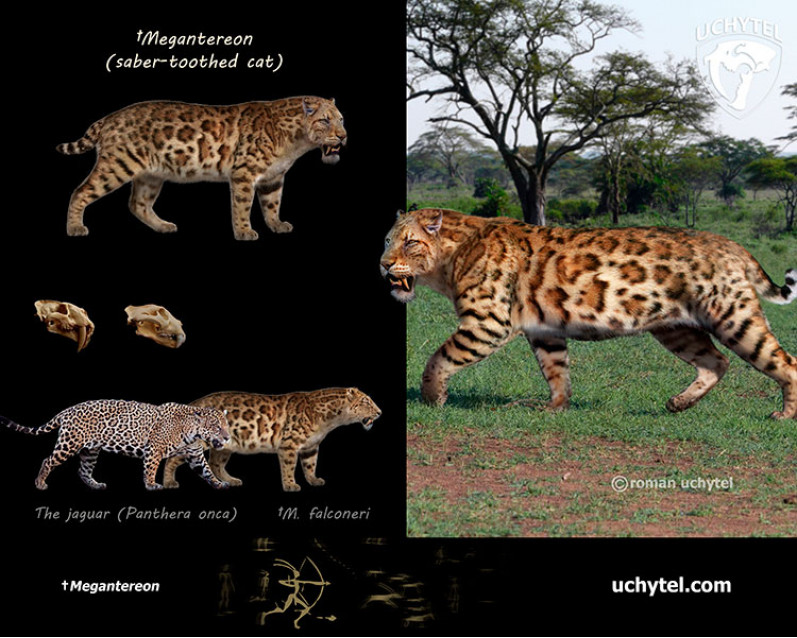





-70x56.jpg)




